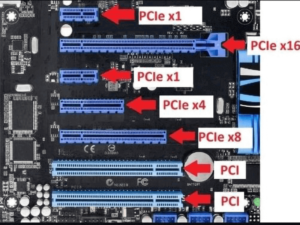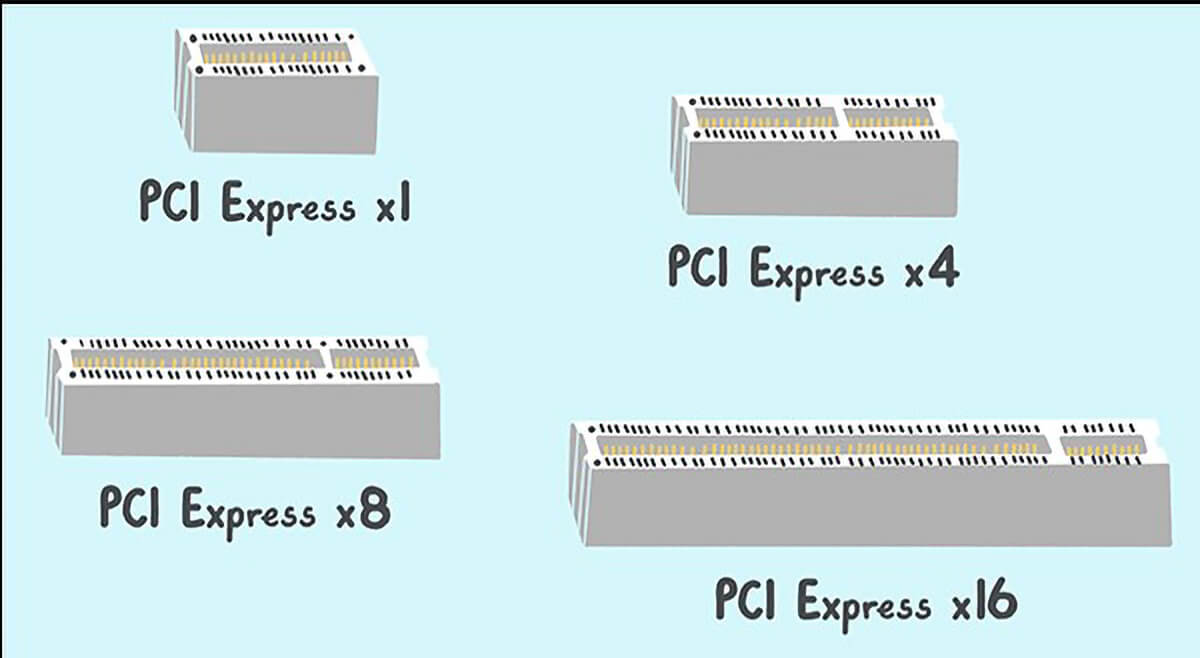In, our motherboard we often see various types of slots are there. And except for the ram and graphics card, we hardly use any of them. So, ever wondered what are the uses for these PCI express slots?
Well, there are tons of usage of these PCI slots and in this article, we are going to see detail about the PCI slots.
What are these PCI slots?
Peripheral Component Interconnect is the full form of PCI and intel invented back in 1992 to expand our motherboard capabilities by using addon cards in these PCI slots. And the bandwidth of this PCI was 133MB/s for 32 bit. Yes, you read it right! Because back then we never needed higher bandwidth for PCI.
PCI and PCI Express are not the same!
In 2004 PCI was replaced by PCI express in our motherboards. Which has better speed and latency than PCI.
So, why PCI Express is better than PCI ?
PCI was using parallel transmission for data transfer and which has more latency and data corruption chances when increasing the frequency for better speed. Where else the PCI Express uses both parallel and serial transmission. In which data can be transferred both parallelly and serially at different frequencies.
In our modern day’s motherboard, we mostly use the PCI express slots for most case
Types of PCI Express and its speeds
To understand the PCI express slots and their data transfer speeds. We need to get simple knowledge about some terminology about data transmissions.
That is
>signal = collection of two or more wires
>lane = collection of two or more signals
>link = collection of two/more lanes is link
As we are aware of the terminologies, we can understand the PCI express slots and their bandwidth easily.
There are 5 Generations of PCI express are released to date Gen1, Gen2, Gen3, Gen4 & Gen5 and there are 5 slots sizes available in motherboards x1, x2, x4, x8, and x16.
In Gen1, a single lane’s speed is 250MB/s (which is denoted as x1 lane)
Here are a brief table of all PCI express versions and their data transfer rates
| Versions | introduced | Transfer Rate (X1 ) | Transfer Rate (X2 ) | Transfer Rate (X4) | Transfer Rate (X8 ) | Transfer Rate (X16 ) | Line code |
| PCIe 1 | 2003 | 250MB/s | 500MB/s | 1GB/s | 2GB/s | 4GB/s | 8b/10b |
| PCIe 2 | 2007 | 500MB/s | 1GB/s | 2GB/s | 4GB/s` | 8GB/s | 8b/10b |
| PCIe 3 | 2010 | 1GB/s | 2GB/s | 4GB/s | 8GB/s | 16GB/s | 128b/13b |
| PCIe 4 | 2017 | 2GB/s | 4GB/s | 8GB/s | 16GB/s | 32GB/s | 128b/13b |
| PCIe 5 | 2019 | 4GB/s | 8GB/s | 16GB/s | 32GB/s | 64GB/s | 128b/1b |
(All the data transfer value is in round figure for the sake of understanding)

Now we know about how many types and sizes of PCI Express slots. So, let us look at them and see how they work.
x1 PCI express slots
This slot is the smallest in all slots and has less bandwidth (see the tables). You can use some low bandwidth cards in this slot, like Sound Card.
USB Port Expansion, Network Cards, TV Tuner Cards, Video Capture Cards, PCIe Riser Cards.
x4 PCI express slot
The PCI express slot x4 slots have 49 pins and can transfer data at medium speeds. You can put any normal cards in these slots. Normally we use SATA Expansion Cards Gen 3/4 in this port.
x16 PCI express slots
These are the slots with the highest number of (82 pins) in them. And have the highest data transfer rate. We used widely it with GPUs since they are the fastest.
Can I mix match Cards and slots?
Yes, you can put any larger addons cards to slower ports and vice versa because PCI Express has very good compatibility with their slots. But you should not do that because it can cause some negative consequences.
In particular, if you put a larger card in smaller ports or use smaller ports for a larger card. You will not get the optimal performance of the add-on card.
All x16 slots, not x16 slots!
All the x16 slots are not x16 they can be x8 or even x4 slots. physically, they look like an x16 but they have provided only lanes of x8 slots. So, to know always look at the back of the motherboard to confirm that all pins are connected.
Conclusion
To sum things up, in this brief article we get to know the difference between PCI and PCI express and the uses of PCI express slots and with their bandwidth and generations.
Also Read : how to update your motherboard bios




